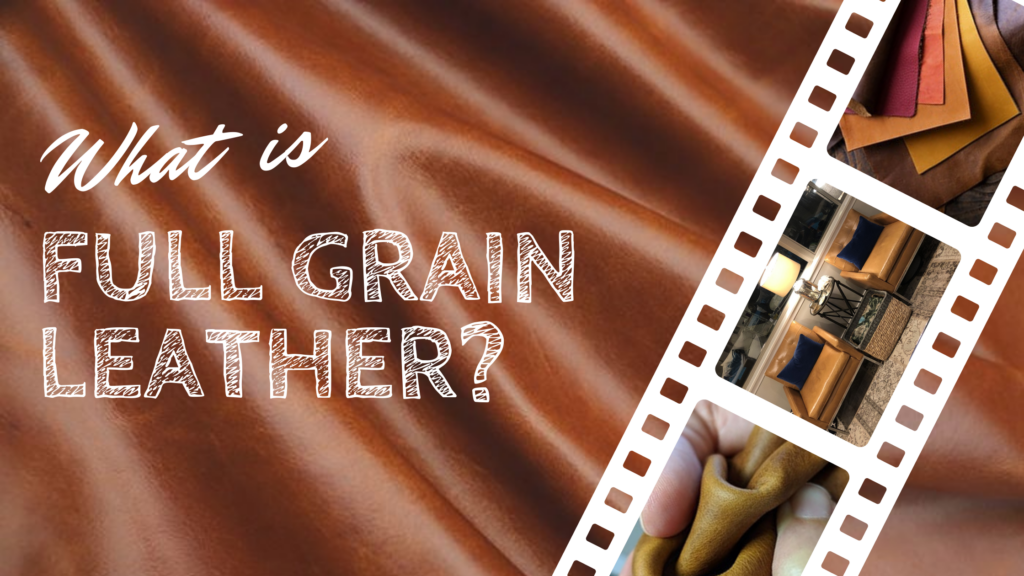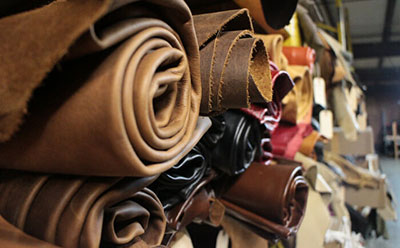
Ah, the great leather debate! What IS full grain leather? What is top grain leather? The real question is “which is better?” and the answer is… it depends. Depending on your project, and your needs, either leather could be the “better” leather. They both serve important roles in the leathercraft world, and it is important to know the difference.
There is some gray area when it comes to these popular terms, and we’re here to break it down for you in our “Leather 101” series. In this first installment, we are tackling full grain leather- what it is, how it is made, and when to use it.
What is Full Grain Leather?
First things first, full grain leather is the unaltered, top cut of a hide. The diagram below illustrates how a cowhide, which initially is very thick, is sliced into two layers - the top cut and the bottom cut, which is called split (suede comes from split leather). This top cut is the most sought after piece of a hide, as it is the strongest, and most durable. The top cut will be finished into either full or top grain leather.
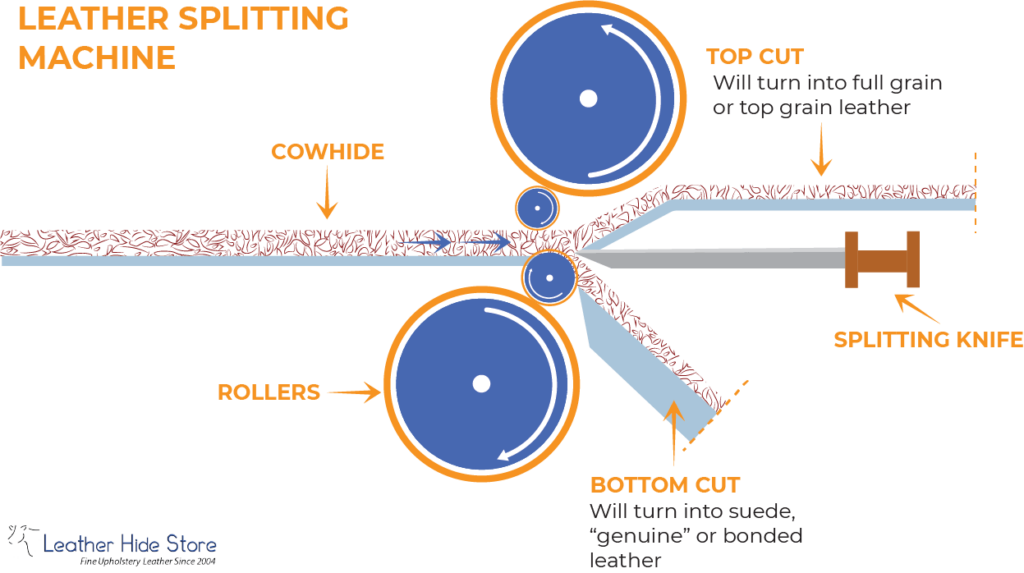
Full grain leather is just as described, it is the “full grain” of the surface of the hide that is not altered in any way, beyond the removal of hair. It is not sanded, or “corrected.” The hide retains the natural markings of the cow- such as scratches, stretch marks and even brands. Not excessive or unsightly markings, but if the cow had a patch of bug bites, or some small scars, you will see those in your full grain hide. These imperfections are considered “the signature of fine leather.”
After the removal of hair is complete, full grain hides are off to be made into finished leather. The first step is tanning the hide. Upholstery leathers are chrome tanned which makes the leather soft and drapey. Chrome tanning is done in large drums and dyes are added to the drum to give the leather hide a desired initial color. However, once this is done the final coloration still has to be applied to the surface - think stain being applied to wood. And, this step is done with aniline dyes.
Typically, full grain hides will be finished using aniline dyes along with the addition of special oils and waxes. Aniline dyes are translucent allowing you to see not just the color but natural texture and grain of the leather. Aniline finishes are designed to enhance the natural characteristics and stunning beauty of each hide. In fact, the hide or cow skin (like our own skin) varies and will absorb the aniline dye differently - creating subtle variations in color that add depth and richness to the finish. Aniline finishes require full grain hides because the grain, natural characteristics and everything else is visible in the finished product! This is why only 10-15% of hides are suitable to be finished as full grain aniline dyed hides- it is leather in its most natural form.
The leather grain diagram below illustrates why full grain is most suitable for aniline dying - because the skin surface and its unique characteristics remain intact.
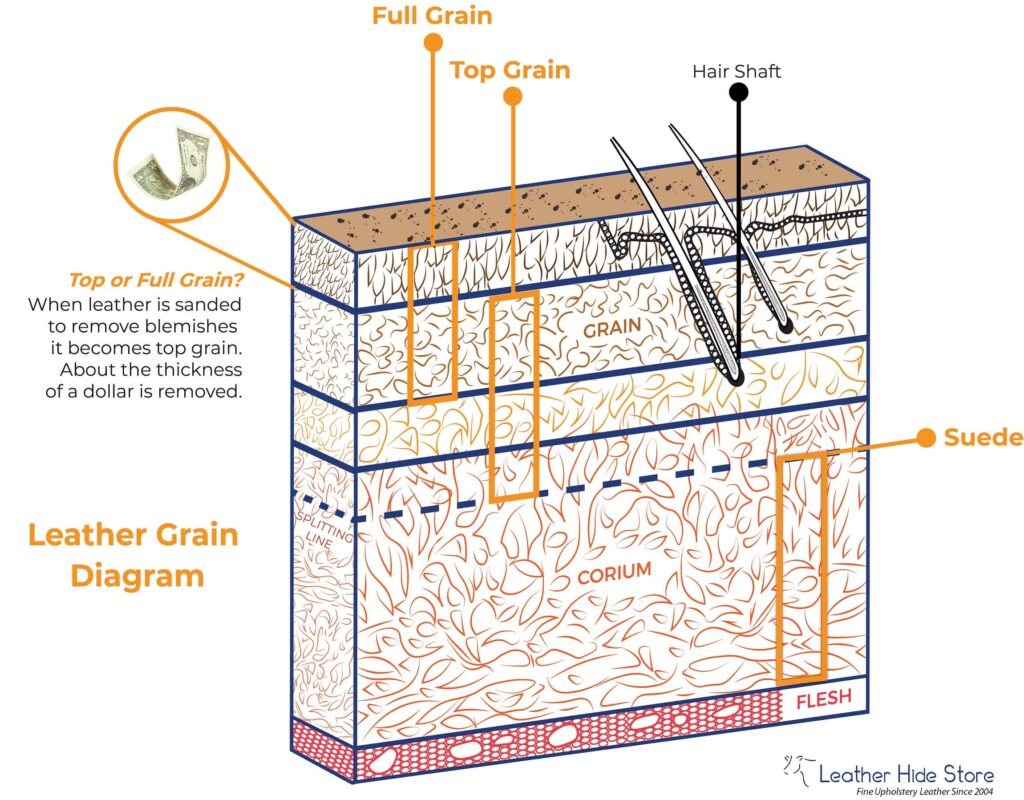
However, full grain hides are not always finished with aniline dyes. When a uniform and very saturated finish color is desired (think lipstick red) a full grain hide will be finished with pigments (leather paints) instead. Our classic Urban Collection leather is just one example. While top grain leathers are more commonly finished with pigments than full grain, there is no hard or fast rule here - a leather tannery can apply any type of finish to a full grain hide. In fact, Leather Hide Store offers full grain leather hides in a large variety of finishes and styles.
Characteristics of Full Grain Leather
Upon close (very close) inspection, hair follicles are still visible on a finished full grain hide. This signifies no sanding or “correcting” has occurred.
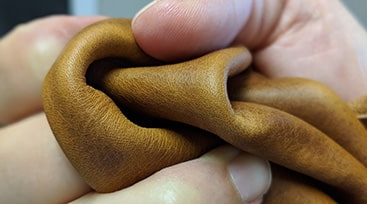
This unedited nature of full grain also lends to one of its most defining traits- the character of the leather. As mentioned previously, those stretch marks, or small scars that are visible in full grain aniline dyed leather are truly the “signature of fine leather.” The small imperfections and color variations, combined with the richness of the leather, create a vibrant, natural look.
Above all else, the ability to patina sets this leather apart from the rest. Over time, full grain aniline leather becomes even more beautiful with use. Think of a well loved leather sofa, or a well worn pair of leather boots- the leather starts to tell a story.
Applications of Full Grain Leather
Full grain aniline leather offers a unique look and feel that cannot be matched or replicated. The ability to beautifully age, patina, show wear, and build character over time is extremely desirable in many applications- think furniture, footwear, or handbags and luggage.
These beautiful chairs were reupholstered in our Full Grain Restorations Italia Gold Distressed.
In fact, when finished with oil and waxes, full grain aniline leather also has a great ability to “recover.” If, for example, you scratch your favorite leather chair you are able to easily buff the majority of the mark away - over time these markings actually enhance the look! Again, some full grain leather is instead finished with pigments that make it suitable for nearly any application including automotive use. And, there is a large group of full grain leathers that are finished with a dye and pigment blend called semi aniline leathers. These leathers offer the beauty of aniline leather but the addition of a fine layer of pigment helps balance out the color across the hide. Our extremely popular Restoration Italia line is a perfect example.
Full grain aniline leather is meant to be enjoyed, meant to show a little wear, and ultimately meant to stand the test of time. There is a reason it is a classic- it offers a timeless appearance, and durability, that simply cannot be matched.
A better understanding of full grain leather is a great foundation for your leather education. Stay tuned for our next installment of Leather 101: What is Top Grain Leather?

